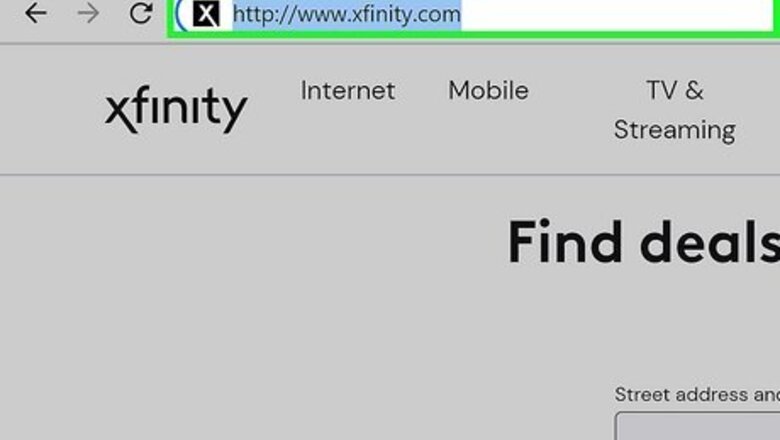
views
For Email Hosted by Your Internet Service Provider
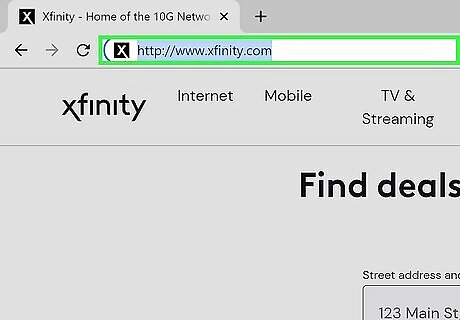
Visit your Internet Service Provider’s (ISP) website. This is the website for the company who provides you with internet connectivity and email services. Note that this method works for people who use the email address assigned by your ISP and won’t be helpful for web-based email users (like Hotmail or Gmail). For example, if you use an email address provided by Comcast Xfinity (for example, [email protected]), go to http://www.xfinity.com. Centurylink users would visit http://www.centurylink.com. There’s a chance your ISP doesn’t provide email addresses to its users. Their website should tell you either way.
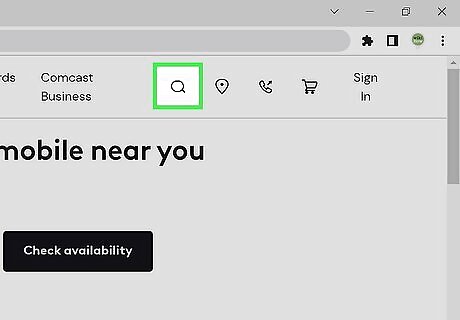
Click the “Support” or “Help” link. Most ISP websites have these links prominently displayed.
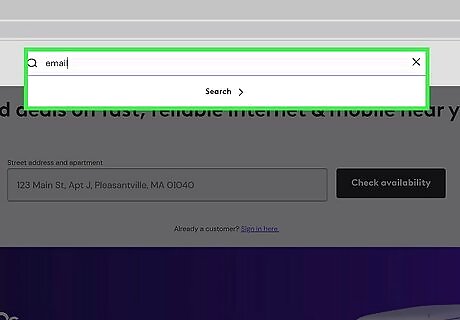
Search for “email.” Type email into the search box and hit ↵ Enter. In the search results, look for links that say something like “Setting up email software.” If there’s no general “email software” link, click on one that’s more specific, like “Setting up Outlook” or “Setting up Mac Mail.” Any help files that explain how to set up email will contain the incoming mail server. Xfinity users can click the “Internet” link, then “Email and Web Browsing.” In the search results, click “Using Email Client Programs with Comcast Email.”
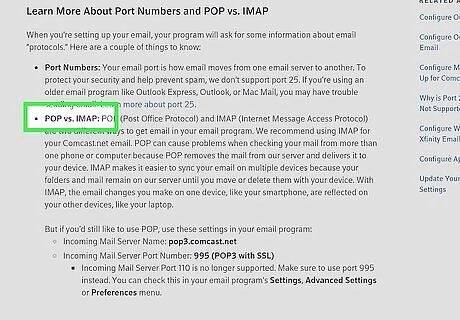
Decide on POP3 or IMAP. Your ISP may offer both POP3 and IMAP as options. If you check mail on multiple devices (like a smartphone and a computer), use IMAP. If you only check your mail on one computer or phone, use POP3. While almost all ISPs offer POP3, many don’t support IMAP. Centurylink, for example, only supports POP3 for home users. If your goal is to receive messages addressed to your ISP-provided email address in a web-based email app like Gmail or Outlook, use POP3. Most ISPs have limits on how large your mailbox can be at any given time and POP3 keeps your mailbox clear by deleting the copy on your ISP’s server.
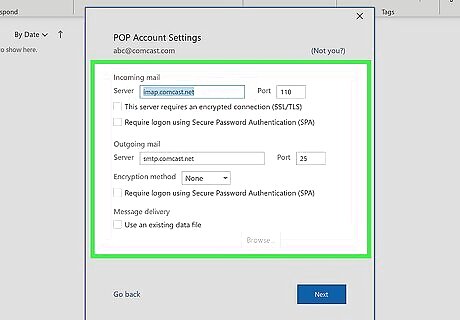
Enter the mail server address and port into your mail client. Most ISPs use the standard POP3 port (110) for incoming mail. If your ISP supports Secure POP, the port number is usually 995. For ISPs that support Secure IMAP, the port is usually 993. For example, Comcast Xfinity’s POP3 server is mail.comcast.net, and the port is 110. If your mail software supports it, you can also use the Secure POP protocol by changing the port to 995. Comcast Xfinity also provides IMAP in both regular and secure forms. The server is imap.comcast.net and the port is 143 (or 993 f you want to use Secure IMAP).
In Gmail
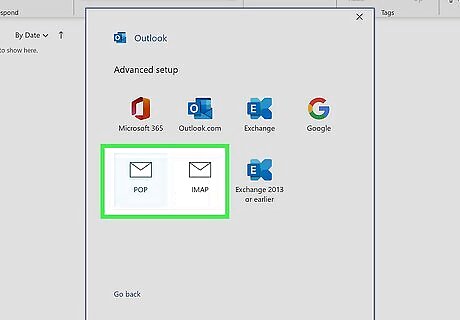
Decide on POP or IMAP. Gmail offers POP and IMAP so you can check your Gmail in other apps. IMAP is recommended for use with Gmail because you can check your email by visiting gmail.com as well as within your mail client. You can use POP, but understand that once your mail software “pops” the message from Gmail, you won’t be able to log into Gmail in your web browser to read or respond to the message.
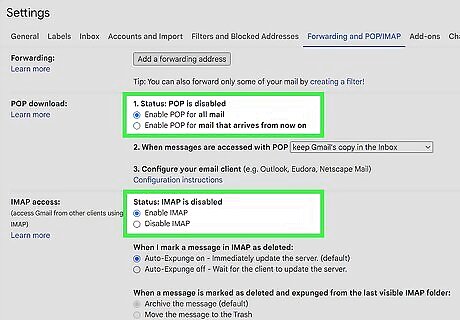
Enable POP or IMAP in Gmail. Log into Gmail (in your web browser) and open the Settings menu. Click the “Forwarding and POP/IMAP” link and select “Enable IMAP” or “Enable POP,” depending on your needs. Click “Save Changes” when done.
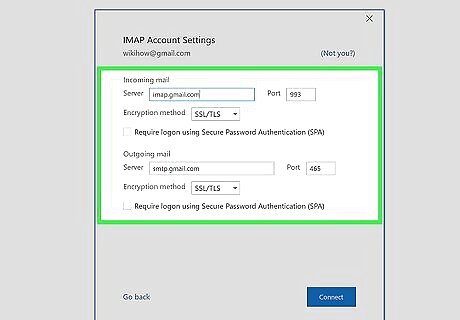
Type the name and port of the incoming mail server into your email software. The IMAP server is imap.gmail.com and the port is 993. The POP server is pop.gmail.com and the port is 995. The username and password for your mail settings is the same as what you use to log into Gmail. Gmail only offers secure POP and IMAP.
In Hotmail/Outlook, Yahoo! Mail or iCloud Mail
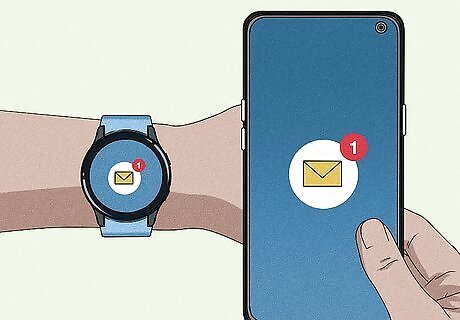
Decide whether you prefer POP3 or IMAP. Hotmail/Outlook and Yahoo! Mail both offer POP3 and IMAP incoming mail servers. iCloud only supports IMAP. If you only plan to check your email in one place (such as in one app on your phone or computer), choose POP3. If you want your email to be available in multiple apps (or if you have an app and also want to use the web-based version of your email (i.e., http://www.hotmail.com) to read and reply to email), go with IMAP.
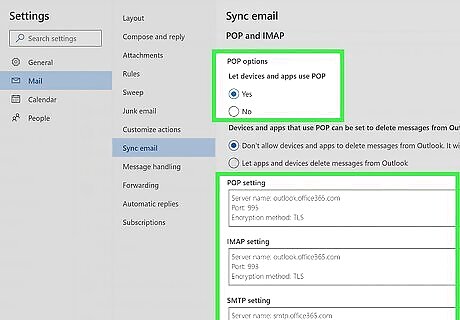
Configure POP3 settings for Hotmail/Outlook. (Hotmail IMAP, iCloud and Yahoo! Mail users can skip this step). If you want to use POP3, log into Hotmail/Outlook on the web and click the Options wheel, then select “Options” from the menu. Navigate to “Managing your account and click “Connect devices and apps with POP.” Select “Enable” under POP and click “Save.”
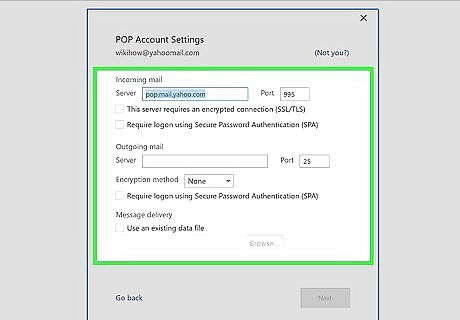
Type the mail server address and port into your mail software. Outlook, iCloud and Yahoo! all use only secure POP3 and IMAP connections for your safety. Hotmail/Outlook POP3: pop-mail.outlook.com port 995 Hotmail/Outlook IMAP: imap-mail.outlook.com port 993 Yahoo! POP3: pop.mail.yahoo.com port 995 Yahoo! IMAP: imap.mail.yahoo.com port 993 iCloud IMAP: imap.mail.me.com port 993
For Your Personal Domain
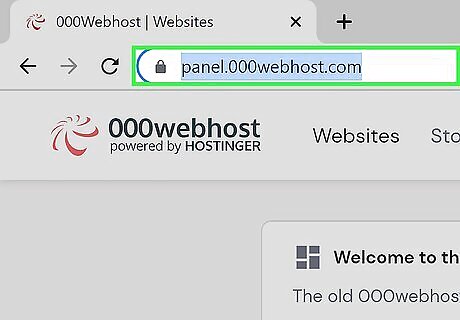
Visit the website of your webhosting service. If you have your own domain that’s hosted by a web hosting provider, visit their website in your browser.
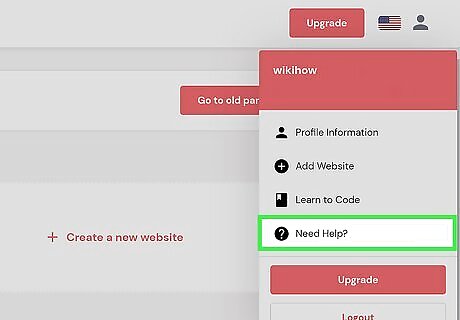
Click the link for “Help” or “Support.” The location of your hosting provider’s incoming mail server can be easily found by searching their support site.
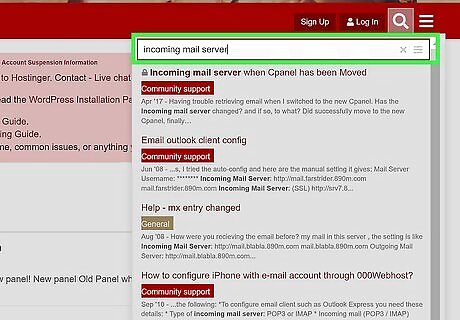
Search for “incoming mail server.” Find a search result that says something like “Setting up your email software” and click on it, as it will contain the incoming and outgoing mail server settings. If you use Hostgator or Bluehost (and most other hosting providers), your incoming mail server is mail.yourdomain.com (replace “yourdomain.com” with your domain). The POP3 port is 110 and the IMAP port is 143. To use Secure POP or IMAP with Hostgator, you’ll need the name of the server which hosts your site. Log into Hostgator and launch the Cpanel. Find the server name next to “Server Name” on the left side of the screen. If the server name is gator4054, your secure incoming mail server will be gator4054.hostgator.com. For secure POP, use port 995. Secure IMAP uses port 993. Bluehost uses mail.yourdomain.com for secure POP and IMAP. For secure POP, use port 995. Secure IMAP uses port 993.
Testing Your Incoming Mail Server
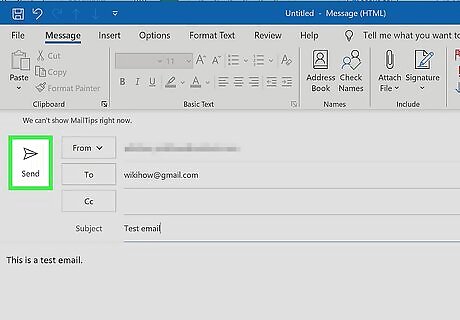
Send yourself a test message. Once you’ve input the incoming mail server address and port, send a test message to your own email address. If your mail client has a “Test Account Settings” button (like Outlook), pressing that button will accomplish the same thing as this method.
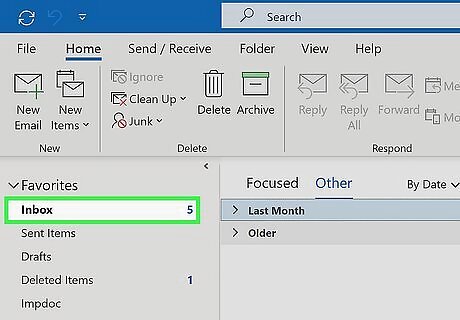
Check your email. Wait a few moments after you send yourself the email and then check your messages. If you are using Gmail to receive POP or IMAP mail from another service, the message will take longer to arrive because Gmail only checks external mail about once per hour. To speed up the process, open your Gmail settings and click on “Accounts and Import.” Scroll down to the POP3 or IMAP settings and click “Check mail now.” If you receive an error when trying to send a message, there may be an issue with your outgoing mail server (SMTP) settings. Verify the SMTP address and port by returning to the location you found the incoming mail server address, and checking it against what you’ve entered in your email app. Gmail’s SMTP address is smtp.gmail.com, port 587 (port 465 for a secure connection). Hotmail/Outlook’s SMTP address is smtp.live.com, port 25. No separate secure port is provided. Yahoo’s SMTP address is smtp.mail.yahoo.com, port 465 or 587 (both are secure). iCloud’s SMTP address is smtp.mail.me.com, port 587. No separate secure port is provided.

Get support. If you get an error message when trying to send or receive email, it can be helpful to search for that error on the web. There are many reasons why you may encounter an error, such as a misconfigured domain name or authentication problems. If you’re running into issues with your ISP or personal domain name, call their tech support departments or search their websites for any error messages you receive.















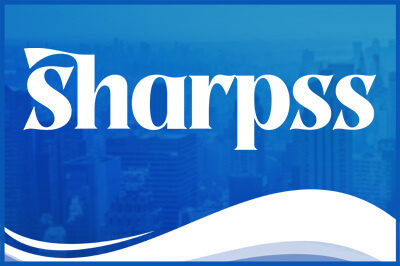


Comments
0 comment